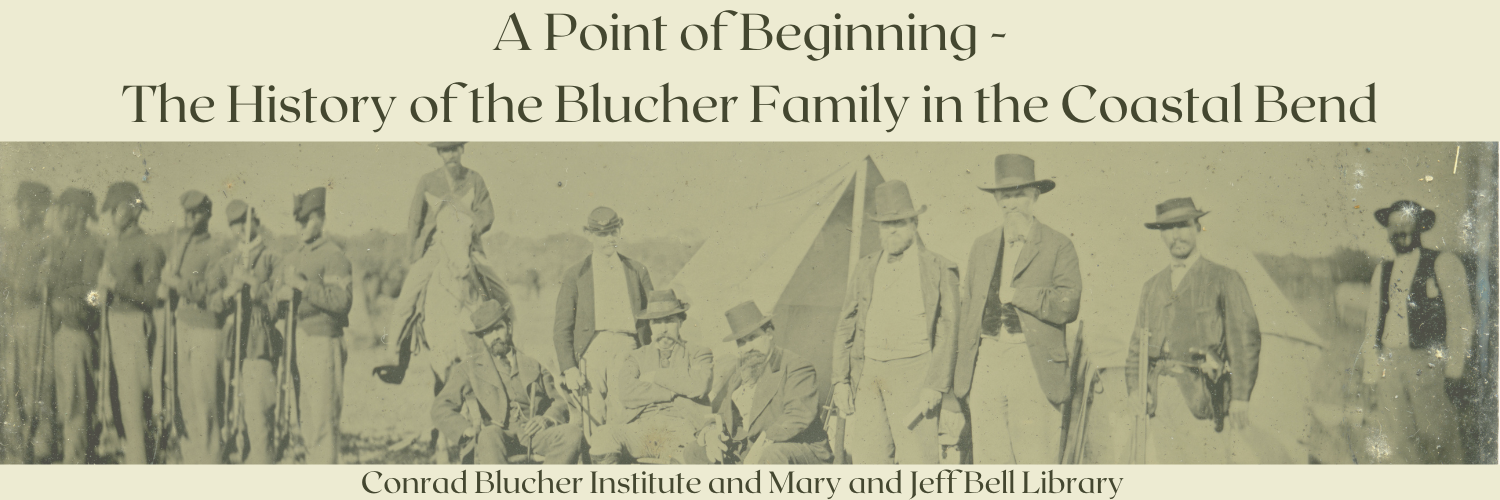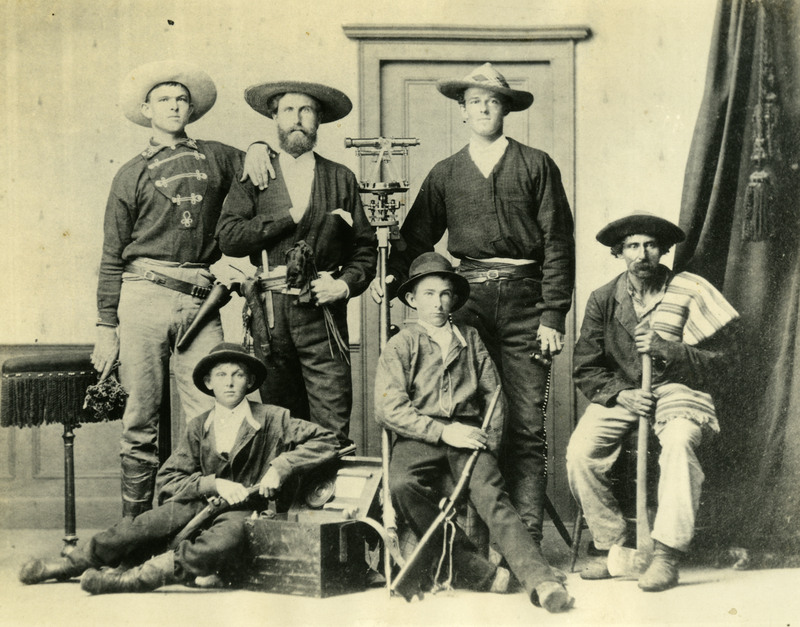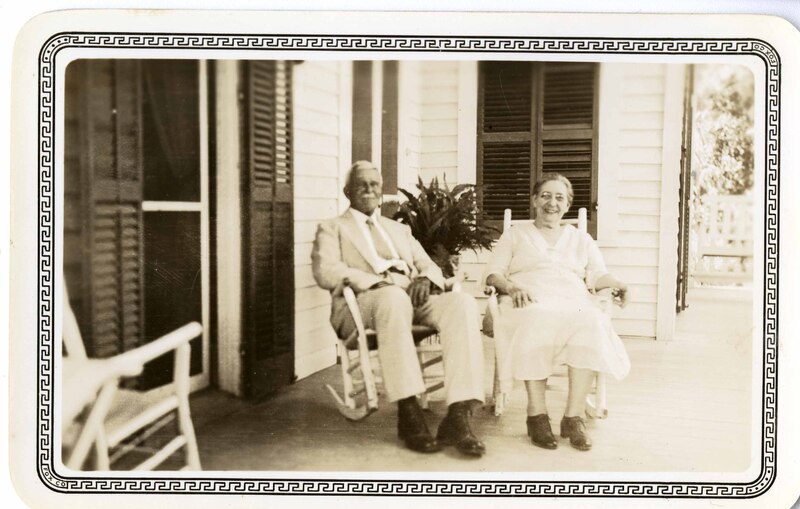Charles Blucher
Please click below for exhibit audio orated by Dr. Thomas H. Kreneck, Archivist and former Director of Special Collections and Archives at Texas A&M-Corpus Christi
In the Blucher surveying and archival legacies, Charles von Blucher, the third issue of the Felix and Maria marriage, figures most prominently. He carried on the profession that cemented the Blucher name to South Texas.
While his father and mother had received the finest education in the Old World, Charles was given the best of what a Texas frontier town had to offer. At first, he and his siblings were tutored at home by their mother, where she taught them primary subjects, languages, and music, with the instruction being in German. She also instilled in Charles — as in all her children — a respect for literacy and culture that was a Blucher tradition.
By 1872, Charles worked full time with Felix, who proudly stated that his son displayed the makings of “an excellent surveyor.” In 1880, he had married a Corpus Christi woman, Mary Ellen Meuly, the sister of Charles A. Meuly. Mary was the daughter of Margaret Rahm and Conrad Meuly. Charles and Mary had five children, Marie, Conrad, George, Carl, and Richard. All of his children earned university degrees. The four boys all graduated at engineers, while Maria went on to become the first librarian in Corpus Christi. Her influence is felt in many ways, including the preservation of the family records.
Charles ran for and won election as Nueces County Surveyor in 1882, thus carrying on in the family tradition established by his father in the early 1850s. As an independent practitioner, he would survey many of the emerging Corpus Christi suburbs and nearby communities.
He worked for such important individuals as Phillip and J.O. Chapman to map the extensive farming enterprise that would come to be called Chapman Ranch in Nueces County. He ventured further out to plat farm lots and garden tracts in such small towns as Realitos, Bishop, and other villages, as well as establishing roadway routes connecting the population centers.
Charles determined the boundaries of ranching lands such as the Palo Blanco Grant and in the harsh country of Brooks County and beyond.
Charles died suddenly at home on February 22, 1938, and is buried at Rose Hill Cemetery.


